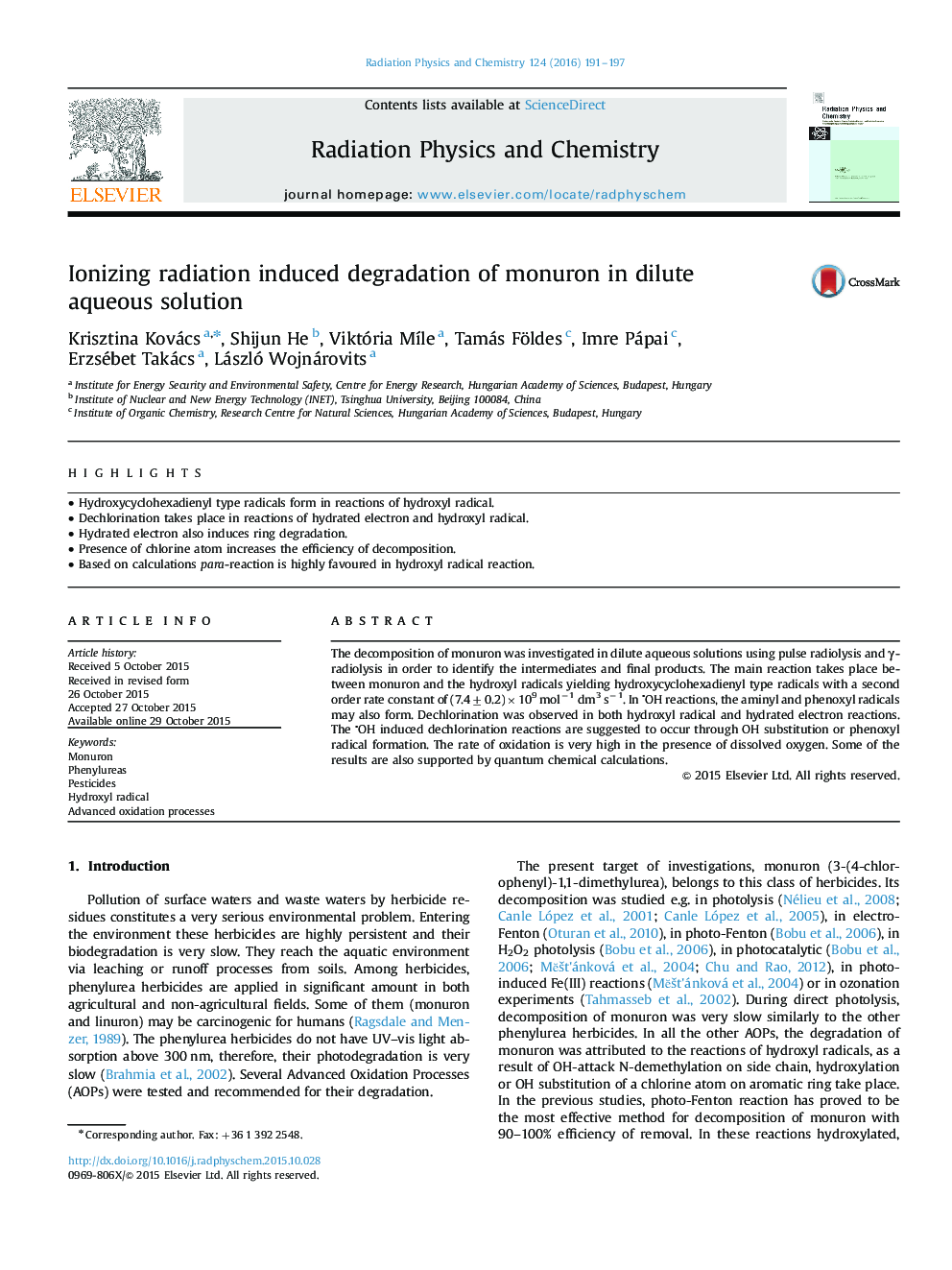| Article ID | Journal | Published Year | Pages | File Type |
|---|---|---|---|---|
| 1891041 | Radiation Physics and Chemistry | 2016 | 7 Pages |
•Hydroxycyclohexadienyl type radicals form in reactions of hydroxyl radical.•Dechlorination takes place in reactions of hydrated electron and hydroxyl radical.•Hydrated electron also induces ring degradation.•Presence of chlorine atom increases the efficiency of decomposition.•Based on calculations para-reaction is highly favoured in hydroxyl radical reaction.
The decomposition of monuron was investigated in dilute aqueous solutions using pulse radiolysis and γ-radiolysis in order to identify the intermediates and final products. The main reaction takes place between monuron and the hydroxyl radicals yielding hydroxycyclohexadienyl type radicals with a second order rate constant of (7.4±0.2)×109 mol−1 dm3 s−1. In ∙OH reactions, the aminyl and phenoxyl radicals may also form. Dechlorination was observed in both hydroxyl radical and hydrated electron reactions. The ∙OH induced dechlorination reactions are suggested to occur through OH substitution or phenoxyl radical formation. The rate of oxidation is very high in the presence of dissolved oxygen. Some of the results are also supported by quantum chemical calculations.
